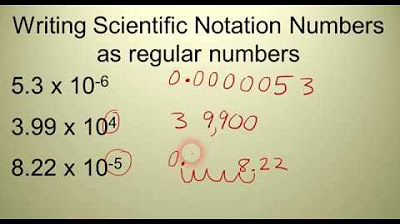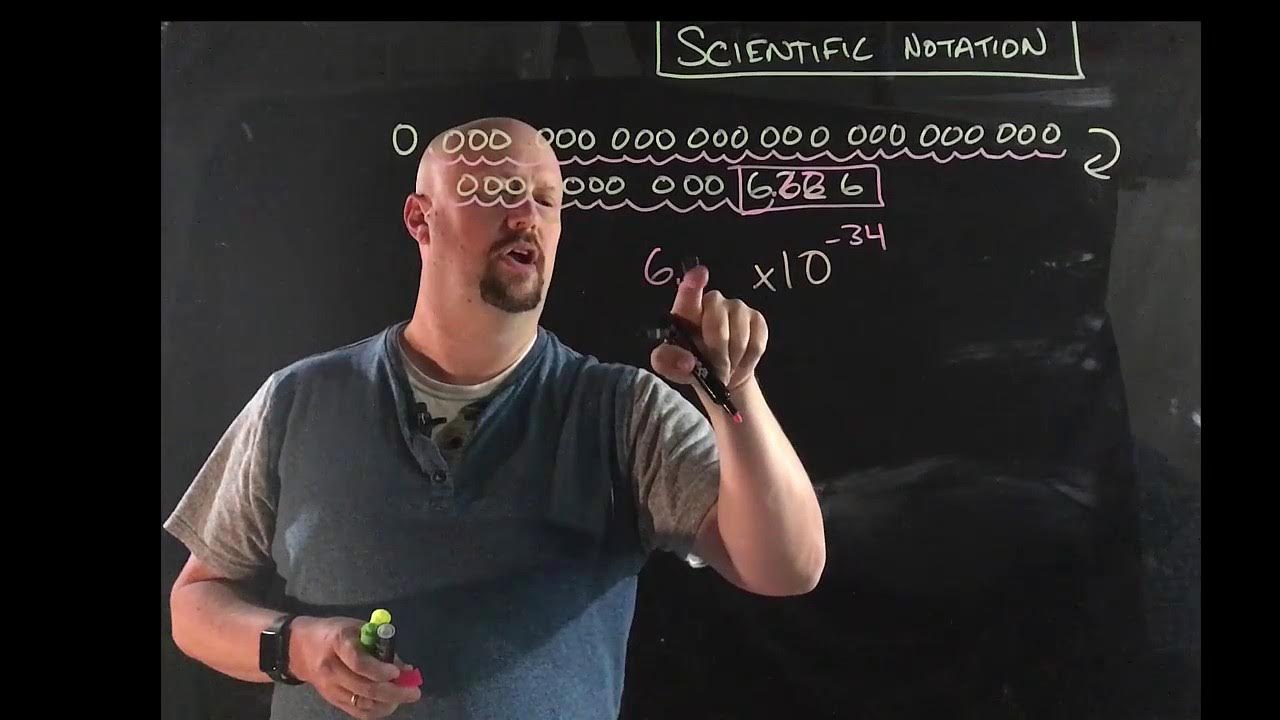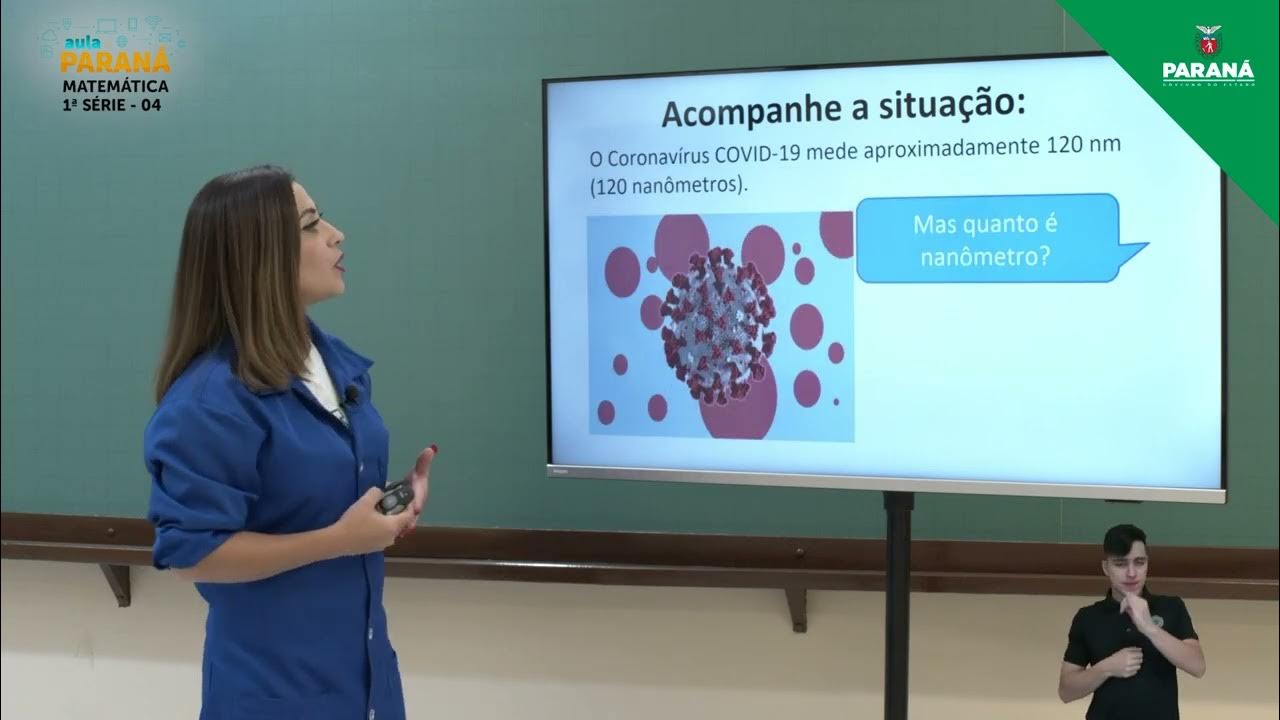IPA Kelas 10 - Notasi Ilmiah & Angka Penting | GIA Academy
Summary
TLDRThis educational video from Gia Academy introduces scientific notation, a method to express very large or small numbers concisely. It explains how to convert numbers into this format, emphasizing the benefits for simplifying calculations and measurements. The video also delves into significant figures, their importance in scientific measurements, and rounding rules. It concludes with practical examples and exercises to solidify understanding, aiming to enhance viewers' comprehension of these fundamental scientific concepts.
Takeaways
- 😀 Scientific notation is a method of writing numbers in the form of a base number multiplied by a power of 10, making it easier to express very large or very small numbers.
- 📚 The base number 'a' in scientific notation should be a real number between 1 and 10, and 'n' is an integer exponent, which can be positive or negative.
- 🔍 To express very small numbers like the mass of an electron, you shift the decimal point to the right until the base number is between 1 and 10, resulting in a negative exponent.
- 🌍 For very large numbers, like the mass of Jupiter, you add a decimal point after the last non-zero digit and shift it to the left until the base number is between 1 and 10, resulting in a positive exponent.
- 📝 Scientific notation simplifies the writing of significant figures from measurements, facilitates algebraic calculations, and makes it easier to determine the order of magnitude of the measured quantities.
- 📐 Significant figures include both certain and uncertain digits, where the last digit is the uncertain digit, representing the precision of the measuring instrument.
- 🔢 The rules for determining the number of significant figures include counting all non-zero digits, zeros between non-zero digits, and zeros to the right of the decimal point if they follow a non-zero digit.
- ✂️ Rounding rules for significant figures involve rounding up if the first uncertain digit is 5 or more, and rounding down if it is less than 5, with special consideration for numbers exactly at 5.
- 🧩 In mathematical operations, the number of significant figures in the result should match the smallest number of significant figures among the numbers involved in the operation.
- 🔢 The difference between approximate numbers, which include significant figures and one uncertain figure, and exact numbers, which are clearly defined and obtained from counting or fixed calculations.
- 📝 When multiplying or dividing significant numbers with exact numbers, the result should contain a number of significant figures corresponding to the significant number with the least amount of significant figures.
Q & A
What is scientific notation and why is it used?
-Scientific notation is a way of writing numbers in the form of a base number multiplied by a power of 10, also known as exponential notation. It is used to simplify the writing of very large or very small numbers, making it easier to perform calculations and understand the scale of measurements.
How do you convert a number into scientific notation?
-To convert a number into scientific notation, you move the decimal point to the right of the first non-zero digit, creating a base number between 1 and 10. Then, you multiply this base number by 10 raised to the power of the number of places you moved the decimal point, which is the exponent.
What is the significance of the base number 'a' in scientific notation?
-In scientific notation, 'a' is the base number or the significant figure part of the number. It must be a real number greater than or equal to 1 and less than 10, ensuring that the notation is standardized and easily comparable.
How is the exponent 'n' determined in scientific notation?
-The exponent 'n' in scientific notation is determined by the number of places the decimal point is moved to achieve the base number 'a'. If the original number is less than 1, 'n' will be negative, indicating the decimal point was moved to the right. If the original number is greater than 1, 'n' will be positive, indicating the decimal point was moved to the left.
What are the benefits of using scientific notation in scientific measurements?
-Scientific notation offers several benefits: it simplifies the writing of significant numbers from measurements, facilitates algebraic calculations, and makes it easier to determine the order of magnitude of the measured quantities.
What is the difference between significant figures and estimated figures in measurements?
-Significant figures include both certain figures, which are directly read from the measuring instrument, and estimated figures, which are uncertain and not directly visible on the scale of the measuring instrument. The last digit in a measurement is usually the estimated figure, while the others are considered certain.
How do you determine the number of significant figures in a given number?
-To determine the number of significant figures, you count all the non-zero digits, any zeros between significant figures, and any trailing zeros in a decimal portion. Leading zeros are not counted as they do not contribute to the precision of the measurement.
What is the rounding rule for significant figures when performing arithmetic operations?
-When rounding numbers to a certain number of significant figures, if the first digit to be discarded is 5 or greater, the last retained digit is increased by one. If it is less than 5, the last retained digit remains the same and the subsequent digits are dropped.
How does the number of significant figures affect calculations like addition and subtraction?
-In addition and subtraction, the result should only contain one estimated figure. If there are multiple estimated figures, the result is rounded to have only one estimated figure, ensuring the precision of the calculation is consistent with the least precise number involved.
What is the impact of significant figures in multiplication and division calculations?
-In multiplication and division, the result should contain the same number of significant figures as the number with the least significant figures in the operation. This ensures the accuracy of the result is not overstated based on the precision of the numbers involved.
How should you handle significant figures when dealing with exact numbers in calculations?
-Exact numbers, such as those derived from counting or defined constants, are treated differently from significant figures obtained from measurements. When combining exact numbers with significant figures, the result should contain a number of significant figures equal to the least number of significant figures in the significant figures involved.
Outlines

This section is available to paid users only. Please upgrade to access this part.
Upgrade NowMindmap

This section is available to paid users only. Please upgrade to access this part.
Upgrade NowKeywords

This section is available to paid users only. Please upgrade to access this part.
Upgrade NowHighlights

This section is available to paid users only. Please upgrade to access this part.
Upgrade NowTranscripts

This section is available to paid users only. Please upgrade to access this part.
Upgrade Now5.0 / 5 (0 votes)





